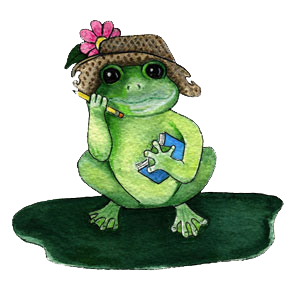Had I been asked back then, I’d have defined my parents’ definition of “good music” as restricted to songs written before 1959, up to and including all Elvis gospel recordings and the weekly Lawrence Welk Show. Period.
Beneath Daddy’s fatherly exterior was a former barbershop quartet singer who not only knew all four parts of any barbershop tune by memory, but also had performed at the Orpheum Theater during the thirties. This was quite an accomplishment for young, first generation Americans. Their quartet was billed as the Four Loose Leaves from the Book of Harmony. No recordings existed and the four had long since parted ways, but Daddy’s love for music remained.
Mom could sing, too, so as we grew and learned the words, we baby girls joined in. Singing in the car became the norm, whether it occurred on longer trips to Livermore or shorter ones to visit our cousins. So, you could imagine the folk’s excitement when at age nine I expressed interest in taking music lessons. I mentioned that my best friend at school was taking accordion lessons from the music store on the boulevard. My parents agreed to speak with the store and an elderly gentleman wearing a hearing aid came to our home to “test” my musical ability. He had me hold a guitar and I strummed it however many times. Yes, their daughter definitely had talent. I expressed interest in the guitar.
Daddy’s response was both immediate and adamant: a guitar was NOT an instrument. An accordion, Daddy pursued, now THAT was an instrument. I wasn’t following all the nuances in this conversation, and I’m sure neither was the elder gentleman, so Daddy further explained. In simple terms, an accordion could carry the entire melody. The discussion ended. I should take accordion lessons. The gentleman left and it was forward march, literally, as I learned to play simplified renditions of John Phillip Sousa.
What was good enough for me was also good enough for my baby sister. We actually excelled at the accordion, having slowly absorbed the old world musical rhythm, harmony, and appreciation for the more traditional forms of music, i.e. waltzes, polkas and the before mentioned marches. It wasn’t long before we girls could identify our country’s armed services’ theme songs – all five of them – and knew at least the first verse from each. One can imagine just how “cool” it was to play an accordion during the Pepsi Generation…and while Coke was teaching the world to sing… NOT!
By the time performers like Joan Baez and Judy Collins sprang onto the music scene, I once again considered playing guitar. Secretly, I pictured myself a stage performer or, better yet, the voice of a Disney character in a full length feature film. Because I normally carried the melody on car trips, the idea seemed feasible. I braved it and shared my thinking with the folks. No go. Parents ruled in our household. I would stay with the accordion, even if it meant Mom still having to help me carry the heavy instrument down to the boulevard… Daddy had discovered another two loose leaves and he was not about to let us drift away on some musical tangent.
“You call that music?” was the rhetorical question during my junior high years, especially when four young Englishmen first invaded our American household. So, I learned to hedge my bets and glean the best arrangements I could from the current circumstances. It was Daddy’s musical generation that he shared with us and, if we played it just right, we could get out of doing the evening dishes. Keep the 1930 top ten melodies coming and Mom would soon join us in harmony, dish towel in hand.
Some children survive parochial school; I survived accordion lessons. Two decades later, we two daughters fully appreciated being the only ones under forty years of age who could share nostalgic moments at a piano bar with AARP octogenarians.
Now THAT was cool.
